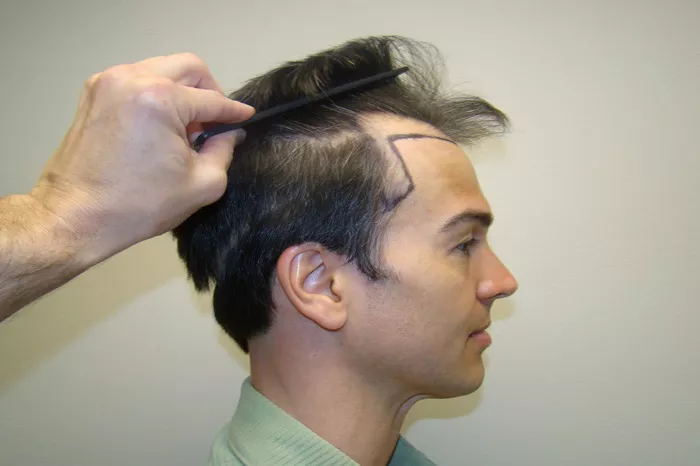Hair transplantation has become a popular solution for hair loss, offering natural-looking results. However, the idea of using hair from another person, also known as hair donation, raises several questions and challenges. In this article, we will explore whether using others’ hair for hair transplant is feasible, the science behind it, and the potential implications.
Understanding Hair Transplantation
What is Hair Transplantation?
Hair transplantation is a surgical procedure that involves moving hair follicles from one part of the body (usually the back or sides of the scalp) to the balding or thinning areas. This method ensures that the transplanted hair matches the recipient’s natural hair in color and texture.
Types of Hair Transplant Techniques
Follicular Unit Transplantation (FUT): This technique involves removing a strip of scalp from the donor area, dissecting it into individual follicular units, and implanting them in the recipient area.
Follicular Unit Extraction (FUE): In this technique, individual follicular units are extracted directly from the donor area and implanted into the recipient area. This method is less invasive and leaves minimal scarring.
The Concept of Using Others’ Hair
Why Consider Using Others’ Hair?
The idea of using others’ hair for transplantation arises when the patient has insufficient donor hair. Donor hair limitations can occur in cases of extensive hair loss or scarring that limits the availability of healthy hair follicles.
The Challenges Involved
Immune System Rejection: The primary challenge is the immune system’s reaction. The human body is programmed to reject foreign tissues, including hair follicles from another person. This rejection occurs because the immune system identifies the transplanted hair as a foreign object and attacks it.
Histocompatibility: For a successful transplant, the donor and recipient need to have compatible histocompatibility antigens, similar to organ transplants. Finding a suitable match is extremely rare and complex.
Risk of Infections: Using hair from another person increases the risk of transmitting infections and diseases, even with thorough screening.
SEE ALSO: What Is the Most Advanced Hair Transplant Technique?
Scientific Insights and Research
Attempts at Allogeneic Hair Transplants
There have been some experimental attempts to use others’ hair for transplantation, known as allogeneic hair transplants. These attempts include:
Animal Studies: Research in animals has shown limited success in transplanting hair from one animal to another. However, the success in humans is significantly lower due to more complex immune responses.
Stem Cell Research: Scientists are exploring the potential of stem cells to create immune-tolerant hair follicles. This research is in its early stages and has not yet been applied in clinical settings.
Immunosuppressive Therapies
To counteract immune rejection, researchers have considered using immunosuppressive drugs. These drugs are used in organ transplants to prevent rejection. However, long-term use of immunosuppressants can lead to severe side effects, including increased susceptibility to infections and cancers.
Alternatives to Using Others’ Hair
Body Hair Transplantation
One viable alternative is body hair transplantation, where hair is taken from other parts of the body, such as the chest, back, or beard. This method can provide additional donor hair but may have differences in texture and growth cycles compared to scalp hair.
Hair Cloning and Regeneration
Research in hair cloning and regeneration aims to multiply existing hair follicles. This method could potentially provide an unlimited supply of donor hair. While promising, this technology is still under development and not yet available for clinical use.
Synthetic Hair Transplants
Synthetic hair transplants involve implanting artificial hair fibers into the scalp. These fibers are biocompatible but do not grow or change like natural hair. Maintenance and potential complications, such as infections and scalp reactions, are concerns with this method.
Ethical and Legal Considerations
Consent and Donor Rights
Using others’ hair for transplantation involves ethical issues related to donor consent and rights. It is crucial to ensure that donors provide informed consent and understand the potential risks and outcomes.
Regulatory and Legal Frameworks
Regulatory bodies have strict guidelines for tissue transplantation to ensure safety and ethical practices. Any procedure involving the use of others’ hair must comply with these regulations to protect both donors and recipients.
Patient Experiences and Case Studies
Real-Life Cases
While rare, there have been a few documented cases where closely related individuals, such as identical twins, have successfully shared hair for transplantation. These cases highlight the importance of genetic compatibility in overcoming immune rejection.
Patient Perspectives
Understanding patient perspectives and experiences is vital in evaluating the feasibility and acceptance of using others’ hair for transplantation. Patient education and counseling play a crucial role in setting realistic expectations and addressing concerns.
Conclusion
The current scientific and medical consensus suggests that using others’ hair for hair transplant is not a feasible option due to immune rejection, histocompatibility issues, and potential risks. However, ongoing research in stem cell therapy, hair cloning, and advanced immunosuppressive treatments may offer new possibilities in the future.
For now, individuals seeking hair restoration should consider alternative methods such as body hair transplantation, synthetic hair implants, or exploring upcoming technologies in hair cloning. Consulting with a qualified hair transplant specialist can provide personalized recommendations and the most effective treatment options.
By understanding the challenges and potential of using others’ hair for transplantation, patients can make informed decisions and explore the best available solutions for their hair loss concerns.

